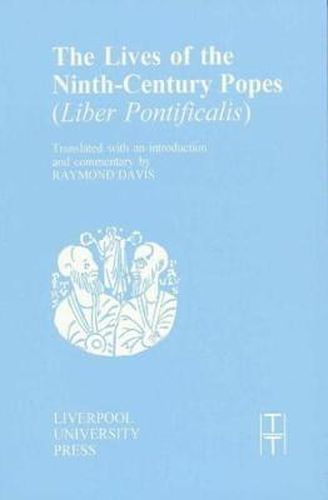Readings Newsletter
Become a Readings Member to make your shopping experience even easier.
Sign in or sign up for free!
You’re not far away from qualifying for FREE standard shipping within Australia
You’ve qualified for FREE standard shipping within Australia
The cart is loading…






Continuing from the year 817, reached in his The Lives of the Eighth-Century Popes , Raymond Davis deals with the remaining ten biographies of the Liber Pontificalis down to 886, when compilation ceased. The 9th-century biographies, as a semi-official papal chronicle, are one of the most important sources for Italian history. Major themes preoccupying the popes of this period and their contemporary biographers were relations with the Carolingian and Byzantine Empires. In respect of the former, the popes were determined to maintain freedom of action while the Western emperors were concerned to exercise some influence in Rome. In the case of the Eastern Empire, the popes wished to maintain their independence, established in the previous century, yet to assert primacy over the Byzantine Church; hence their concern both to have their right to decide between claimants to the See of Constantinople acknowledged and to assert jurisdiction in territory disputed between East and West. Rome itself was under threat, and the Saracen invasion of 846 forms a high-point of the narrative. For all their problems, the popes continued building and richly endowing churches, and the descriptions of objects of precious metal, silks and other textiles are of importance to art historians.
$9.00 standard shipping within Australia
FREE standard shipping within Australia for orders over $100.00
Express & International shipping calculated at checkout
Continuing from the year 817, reached in his The Lives of the Eighth-Century Popes , Raymond Davis deals with the remaining ten biographies of the Liber Pontificalis down to 886, when compilation ceased. The 9th-century biographies, as a semi-official papal chronicle, are one of the most important sources for Italian history. Major themes preoccupying the popes of this period and their contemporary biographers were relations with the Carolingian and Byzantine Empires. In respect of the former, the popes were determined to maintain freedom of action while the Western emperors were concerned to exercise some influence in Rome. In the case of the Eastern Empire, the popes wished to maintain their independence, established in the previous century, yet to assert primacy over the Byzantine Church; hence their concern both to have their right to decide between claimants to the See of Constantinople acknowledged and to assert jurisdiction in territory disputed between East and West. Rome itself was under threat, and the Saracen invasion of 846 forms a high-point of the narrative. For all their problems, the popes continued building and richly endowing churches, and the descriptions of objects of precious metal, silks and other textiles are of importance to art historians.